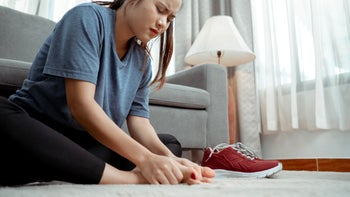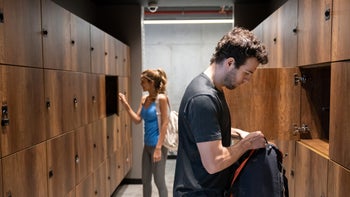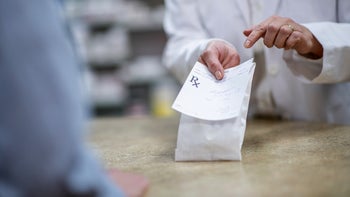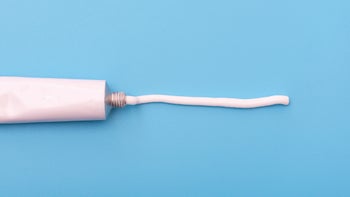What Causes Athlete’s Foot (Tinea Pedis), and What Does It Look Like?
Key takeaways:
Athlete’s foot (tinea pedis) is a common fungal infection that develops on one or both feet, usually in the area between your toes.
Symptoms include redness, itchiness, and flaking of the skin. There are over-the-counter treatments and prescription medications available to treat it.
Athlete’s foot is highly contagious, but there are ways to avoid getting it or passing it to others.
Access savings on related medications
Table of contents
Athlete’s foot (tinea pedis) is a fungal skin infection of the foot. The infection is common in athletes, but don’t let the name fool you — it can affect anyone. It spreads easily from person to person and causes bothersome symptoms, like intense itching and skin scaliness. The good news is that it’s also easy to treat.
Causes of athlete’s foot (tinea pedis)
Athlete’s foot is an infection caused by fungi. Fungi are tiny organisms that thrive in moist, wet environments. Some fungi can naturally live on your skin, hair, and nails.
The fungus that causes athlete’s foot can grow on any part of your body. It’s usually not a problem until it grows so much that it causes a skin infection. When it grows on your feet, it’s called tinea pedis.
Athlete’s foot spreads easily between people through touching. This means that you can get it when you come into contact with someone else who has an infection. And if you touch your infected feet, you can spread it to other people and other parts of your body.
Risk factors
Your risk of getting athlete’s foot also goes up when the environment is just right for the fungi to grow. This can occur if:
You walk barefoot in wet, damp areas (like pools, locker rooms, or public showers).
Your feet sweat frequently.
You don’t change your shoes or socks when they get wet.
You wear thick, tight shoes (like rubber boots).
Treatments for athlete’s foot: You have options when it comes to treating athlete’s foot. From home remedies and OTC options to prescriptions, here are our top recommendations.
Got stinky feet? Sweat and bacteria can make your feet smell. Here are some ways to keep the smell at bay.
Common foot problems: From bunions and calluses to arthritis, you’re more likely to experience foot problems as you age. Here’s how to keep your feet happy.
Signs and symptoms of athlete’s foot
Athlete’s foot leads to easily noticeable symptoms, including:
Redness
Itching
Flaking of the skin
White patches between the toes
A burning or stinging sensation
Blisters
Discolored or thick toenails
The symptoms that you experience may vary depending on where the infection is on your foot:
Toe web infection usually leads to skin peeling and cracking between the fourth and fifth toes.
Moccasin type infection may cause thick, cracked skin on the bottom of your foot near your heel. It sometimes leads to a foul odor.
Vesicular type infection usually leads to blisters on the sole of your foot.
Images of athlete’s foot (tinea pedis)
Athlete’s foot can look like a red, brown, or white, peeling rash. Sometimes it can cause blisters and open sores. It often occurs on the bottom and sides of the feet or in between the toes.


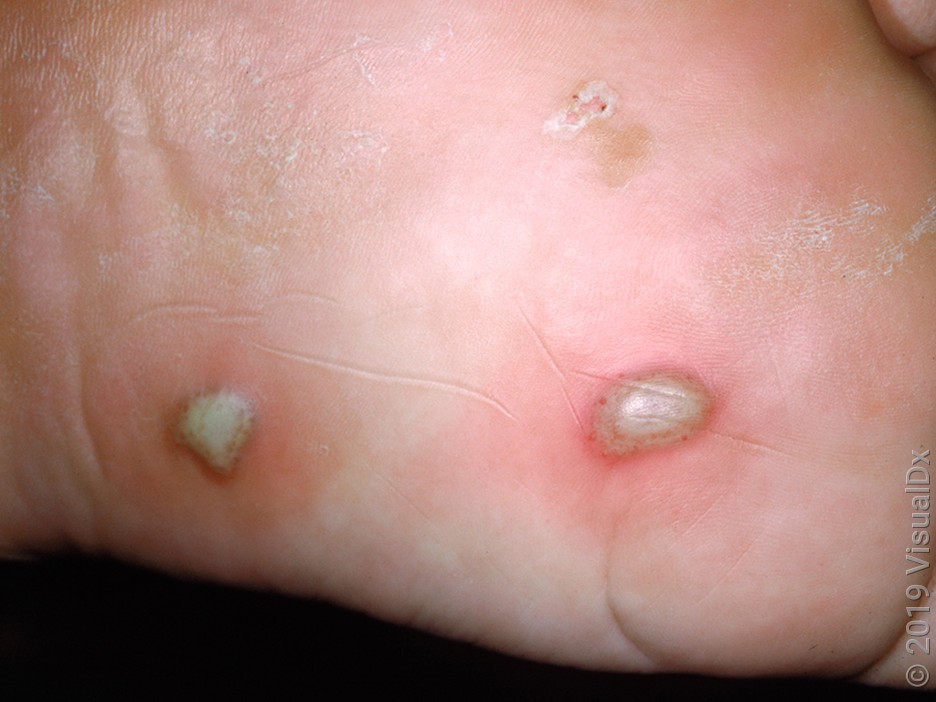
How to diagnose athlete’s foot
A dermatologist or another healthcare professional can usually diagnose athlete’s foot by examining your rash and asking about your symptoms. Sometimes, they’ll need to run additional tests to confirm the diagnosis. They may take a skin scraping from the rash and look under the microscope to check for fungus. In rare situations, they may do a skin biopsy (take a small sample of skin), and send it to a lab for evaluation.
Treatment for athlete’s foot
There are a range of treatments for athlete’s foot. And the good news is that many of them are over-the-counter (OTC) options. They can come in a variety of forms, such as powders, creams, gels, lotions, and sprays.
OTC medications
For mild cases, OTC medications include:
Tolnaftate (Tinactin)
Clotrimazole (Lotrimin)
Terbinafine (Lamisil)
Prescription medications
Prescription topical medications are also available. These might be necessary for someone who has more serious symptoms. They include:
Clotrimazole / betamethasone (Lotrisone)
Econazole (Ecoza, Spectazole)
Sulconazole (Exelderm)
In some more severe cases, topical medication might not be enough. If you have tried the above treatments and they aren’t working, a healthcare professional may recommend an oral medication to clear the infection. You can use them along with topical medications.
Oral medications include:
Terbinafine (Lamisil)
Itraconazole (Sporanox, Tolsura)
Make sure to complete the full length of treatment. Athlete’s foot can come back if you stop early. To help prevent it from coming back, continue the treatment 1 to 2 weeks after you see improvement.
How long does athlete’s foot take to go away?
Mild cases of athlete’s foot usually go away within 2 weeks of treatment. But moderate to severe infections may take up to 4 weeks to fully clear. And infections involving the toenails (onychomycosis) usually need longer treatment courses with oral medications.
How to prevent athlete’s foot
Athlete’s foot can easily spread, but there are ways to prevent it. Here are some foot-hygiene tips:
Keep your feet clean and dry, especially between your toes.
Wear loose-fitting shoes.
Avoid shoes made of plastic or rubber.
Wear shower shoes or sandals when you walk around pools, gyms, locker rooms, and public showers.
Use clean, dry socks and replace them if they get wet.
Alternate the shoes that you wear daily.
Avoid sharing towels or shoes.
Use a powder to keep your feet dry.
The bottom line
Athlete’s foot (tinea pedis) is a common fungal foot infection that spreads easily from person to person. It grows rapidly in damp, moist environments and can lead to itching, redness, and flakiness on your feet.
Often OTC treatments can help treat mild infections, which tend to resolve within 2 weeks. But it may take longer if your infection is more extensive or your toenails are infected. Prescription medications can help treat stubborn infections.
Why trust our experts?



Images used with permission from VisualDx (www.visualdx.com)
References
American Academy of Dermatology Association. (n.d.). How to prevent athlete’s foot.
American Osteopathic College of Dermatology. (n.d.). Biopsy.
Centers for Disease COntrol and Prevention. (2024). Healthy habits: Foot hygiene.
Centers for Disease Control and Prevention. (2024). Symptoms of ringworm and fungal nail infections.
Gupta, A. K., et al. (2018). Topical treatments for athlete's foot. Cochrane Database of Systematic Reviews.
Institute for Quality and Efficiency in Health Care. (2022). Overview: Athlete’s foot. InformedHealth.org.
National Health Service. (2024). Athlete’s foot.
Nemours Teens Health. (2023). Athlete’s foot.


